This is not the first time I have been to the Palace Museum in Beijing. Even for a working grunt, an expatriate will find his way to see the big checklist items before too long: The Great Wall, The Terracotta Army, and the Forbidden City. Wait, check that, The Palace Museum became the new name sometime in the last ten years. I like the change. Palace Museum is a more accurate description, and some things are better demystified and made more welcoming.
The last time we were here was 2017, and my time before that was probably 1998. Time passes, people change and grow, and you know what — the Palace Museum grew and changed too. This story is about people and places changing for the better.
I remember three things about the Palace Museum. First, Sir Roger Moore narrates the English language tour. Yes, Bond-James-Bond, 007 himself, lends his smooth as silk voice to introducing the history and traditions of the Emperors court. Second, the vastness of the Palace is matched only by its emptiness. I never went at holiday peaks, which would be a madhouse of course, but I remember how empty the place was. The expansive courtyards and echoing buildings suggested a hollowed out feeling. Last and finally, there was a Starbucks in the back corner. In the Palace Museum! In 1998! All by itself, all green in red surroundings, feeling very out of place. It felt a bit vulgar, and I was glad to learn it had closed sometime later.
Nothing is as it was.
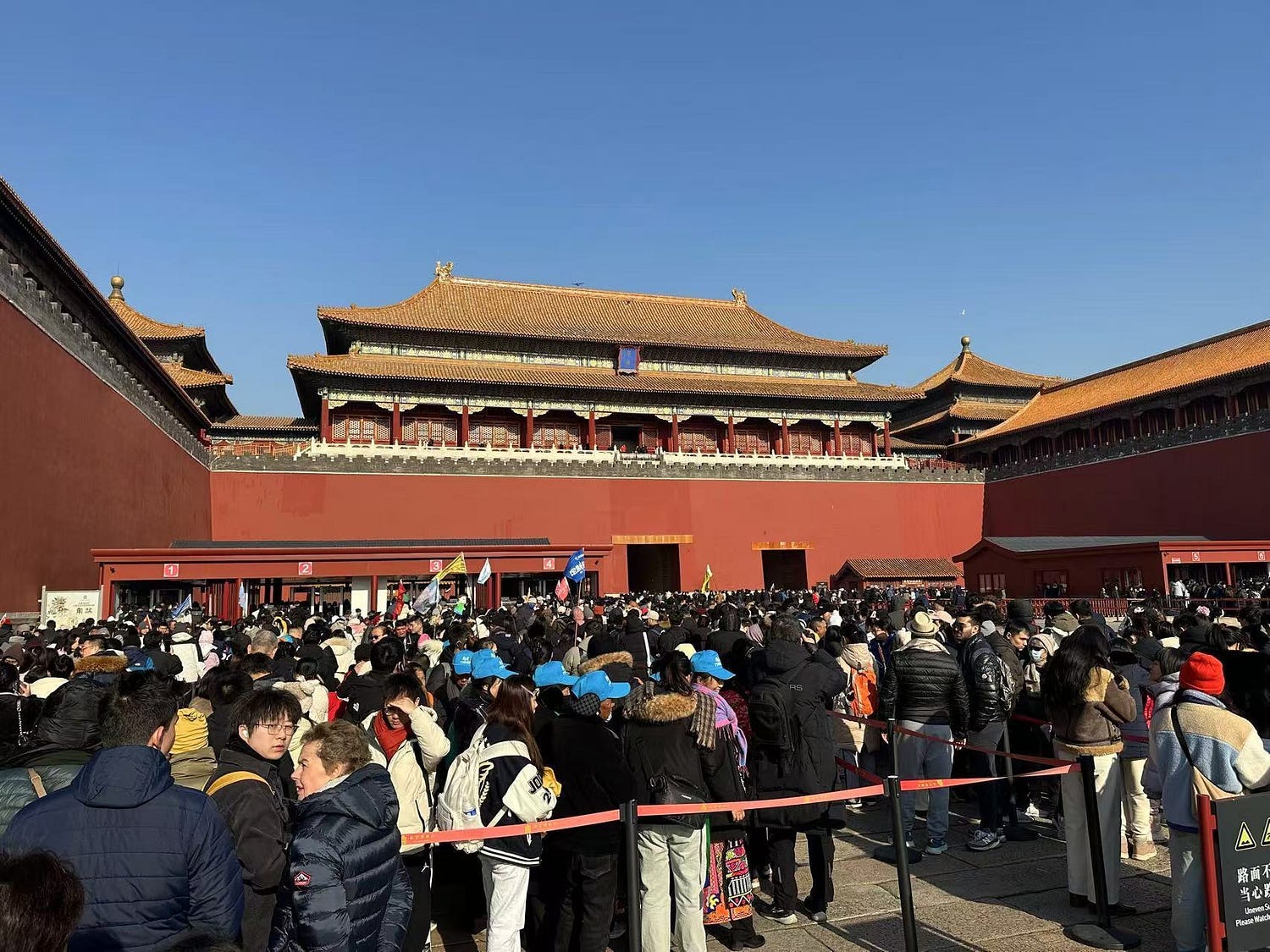
Nowadays you have to make an appointment online to visit the Palace Museum. To see Tiananmen Square too, in the front of the Palace, surrounded by other important buildings of government. None of this security was there during my first visits but is clearly necessary to manage security and smooth demand. The lines look intimidating but moved smartly. The sky was perfectly blue and clear, the air crisp but still.
The Palace Museum contains the imperial royal palaces of the Ming and Qing Dynasties that ruled from the 1400s to 1912 when the last emperor abdicated. It opened to the public in 1925.
There are 980 buildings, nearly 2 million pieces of art, and one million plus visitors come every month to spend time in what was the most secret, impenetrable, forbidden home of the richest families in the world. If you had the stamina and if you could get passes and tickets for all the side galleries in order, walking a full circuit would take at least five hours.
Being neither a historian nor a fanatical completionist, I cannot hope to describe even 1% of the history and meaning behind all the arts and architecture here. What I will do is share my feelings on some of the things I found most interesting.
As we walked down the tunnel towards the Golden Water Bridges and the Gate of Supreme Harmony, I understand the awe visitors had to feel entering this place. For any normal person the effect would be intimidating and terrifying. A summons to this place didn’t happen without import. Your life was about change in a significant way, for good or for ill. Either way, you probably had little say in the matter.
There were so many people, as there probably were back in the heyday, but the sense of scale and awe was undiminished. Instead of being thrown off by the company of so many others, I felt the pressure of the place lessened somewhat. It really was a city, and now the city was populated again.
The imposing centrepiece is the Hall of Supreme Harmony, used for ceremonies like confirming a new Emperor or celebrating the Emperor’s wedding. Try to picture the pomp and extravagance, the tens of thousands crowding to offer congratulations and receive favours. A riot of food, color, and noise if there ever was one. The crowds today merely bring life to the setting and do nothing to diminish the power of the buildings.
I read somewhere that birds cannot land on the roofs of these palaces because the slope is too steep, and that is how the architects built security into design. Birds nesting and messing up everywhere would have been a real hassle to clean.
This is the badass bronze male guardian lion in front of the Hall of Supreme Harmony. The male is usually on the right side facing and you can differentiate him from the female on the left by the ball under his paw. The ball represents supremacy, maybe over the world? The female has a cub under her paw.
The eaves of all the major building in the Palace Museum are decorated by a conga line of fantastical animals led by a guy who appears to be riding on a chicken… only the Hall of Supreme Harmony has ten figures, marking it as the most important building in the city. Every other building has a ranking, some odd number of animal figures. The narrator told me this as we were walking around to the Hall of Preserving Harmony.
Oh I forgot to mention, the foreign language headsets were out of stock at the entrance, but luckily there were kiosks throughout and I picked up one soon enough. Sir Roger had been replaced. Bitter disappointment! The new narrator is a mature stiff Asian lady who does a fair job. Sir Roger, may he rest in peace, is a tough act to follow.
One of the reasons for the change was soon uncovered. As we encountered these enormous bronze vessels the narrator began explaining the origin of the scratch marks. During the Boxer Rebellion, the soldiers of the “Eight Nation Alliance” looted the Forbidden City including the three kilograms of gold that covered these fire prevention vessels.
Finding this interesting, I asked our mixed group of listeners what they thought of this. The boys had mandarin language guides, which omitted this story entirely. I really do not remember if Sir Roger had covered the sacking of Beijing on August 14, 1900, but foreign language visitors today get a version of the story.
This sensitivity to fire also explains why there were few trees in the Forbidden City. I learned there were several reasons. First, the fire hazard. Second, no trees means no cover for assassins to hide behind. Third is fengshui. Of the five elements, Emperors are of “Earth”, and trees are “Wood”. They thought of everything.
A friend of ours, Confucius, said once, “Respect the ghosts and gods, but keep away from them.” He and Laozi agreed on this if not much else. The Palace Museum has been the witness to many glamorous and momentous events over the years, as well as horrific and nightmarish deaths and violations that would surely ruin this story.
This visually engrossing alley between high red walls was one of the paths that the bodies of the dead were taken to remove from the city. How many thousands of unfortunates made this journey? It is said that ghosts can still be felt. A concubine in white running from a soldier. An apparition in black without a face. And so on. Some visitors report feeling sadness, or hearing ghostly dogs barking. This is a place that you didn’t get into easily, and leaving alive was much harder. Enormous Wealth and Absolute Secrecy, the cocktail of nightmares.
The Palace Museum closes before sundown. I would not want to walk these paths alone in the dark. Yet, in the bright light of day, these thoughts would be far away. The secrecy has become public, the taboos broken, and us common folk have the run of the palace. Surrounded by the living and our like, we are not alone.
The brooding emptiness and grudging regret that characterized the “Forbidden City” of my 1998 memories is a relic of the past, I am happy to say. The buildings are the same, the history is the same, but WE, we are changed.
Austere reverence replaced by colorful fun and immersion. The cosplayers of the Palace Museum, an attraction all their own, brought by the people, for the people, is easily the best part of the visit. Everyone was getting involved. Mothers and daughters, entire families, putting on their best Ming and Qing finery and returning life to a place long dead without them.
This is what changed, the people. The Palace Museum is still alive today because of what we bring with us; our liveliness, our colour. Our hunger to learn from the past and measure our accomplishments against it.
Walking towards the back quarter and away from the centre, the residences begin to feel more like places people would have lived in. Emperors and their relations retired and needed places of their own. Here at the Hall of Preserving Harmony, the retirement villa for Emperor Qianlong (1735–1796), this Nine Dragon Wall was built as a privacy screen for the residence. I have noticed this architectural quirk before in many places, but did not know until today the purpose of these screens was to deny evil spirits (or prying eyes) access because spirits can only travel in straight lines.
Remember these are Chinese dragons who swim, not fly, and they are generally more friendly, at least ambiguous, in their attitudes and motivations. No Smaug or Drogon here. Dragons are symbols of luck, longevity, and have control of rainfall and flooding.
Do you see the missing tile in the body of the white dragon? The stories say it has always been there since the time of installation in 1770. They say that a tile broke and a carpenter fitted a wood tile in its place so that nobody would be punished. The official inspectors did not discover it and the legend was born.
We passed the dragons on the way to our appointment to see the Jewellery exhibit in one of the peripheral buildings. If planning a visit, there are a number of special galleries, some needing online appointment and additional fees. We were only able to secure one, the others being sold out. As you will see, one was enough for today.
Oh, so many people, a crush of humanity shuffling and straining to get through the hall. Most of us, including myself, soon forgetting the initial purpose of seeing the treasures and only concentrating on getting through and back out into the sunshine.
Sure, the stuff was cool. Priceless, full of history, each a story on its own. Golden incense vessels, bowls of translucent white jade held by the Emperor, ruby and sapphire baubles, the playthings of the powerful. If you don’t do well with crowds or worship excess, give these a miss.
Now this open (free) exhibit was my favourite, and the most whimsical. This gallery showcases each — all ten in existence — of The Stone Drums of Qin. These large drum-shaped stones are the oldest stone inscriptions known. Each is priceless, weighs 400 kilograms each, and while there is uncertainty and controversy on where they originated from and their age, it could go as far back as 500BC.
So what do they say? Many of the characters have been destroyed and worn away by time and use. Now only 470 of what is thought to be the original 700 are left to be interpreted.
I didn’t know any of this until after we left, but what got me was the cuteness of the meanings behind the inscriptions. Like early ancestors of Instagram, the Duke of Qin left behind a record of positive marketing.
A poem describes hunting scenes to a leisurely tune that presents the Qin state as rich and powerful.
A poem that praises the beautiful Qian River and the “joyful” fish swimming in it.
A poem records that Xiangong Qin and the envoy of the King of Zhou went on a sightseeing tour together and presumably had a nice time.
In a breaking news style, a poem narrates that laborers started to build a new road and plant various trees as instructed by government officials.
The drive to be remembered and memorialized seems to have been with us for all time. Now that we all have the tools to make lasting records in real time of everything we do, I wonder if anyone will be able to see or even care to see it all 2500 years from now.
I saw two percent of The Palace Museum and can relate only a part of that here. There is just too much for one visit, one day, one article. I didn’t even want to go to “obvious” locations, but I am glad that we took the time to hold ourselves up to the mirror of the Palace Museum and see how we have changed. Take a minute to think about the staggering wealth concentrated in so few hands, and how everyone had a hand in justifying it. We may not be much better today, but we are better. The responsibility now to continue is with us.






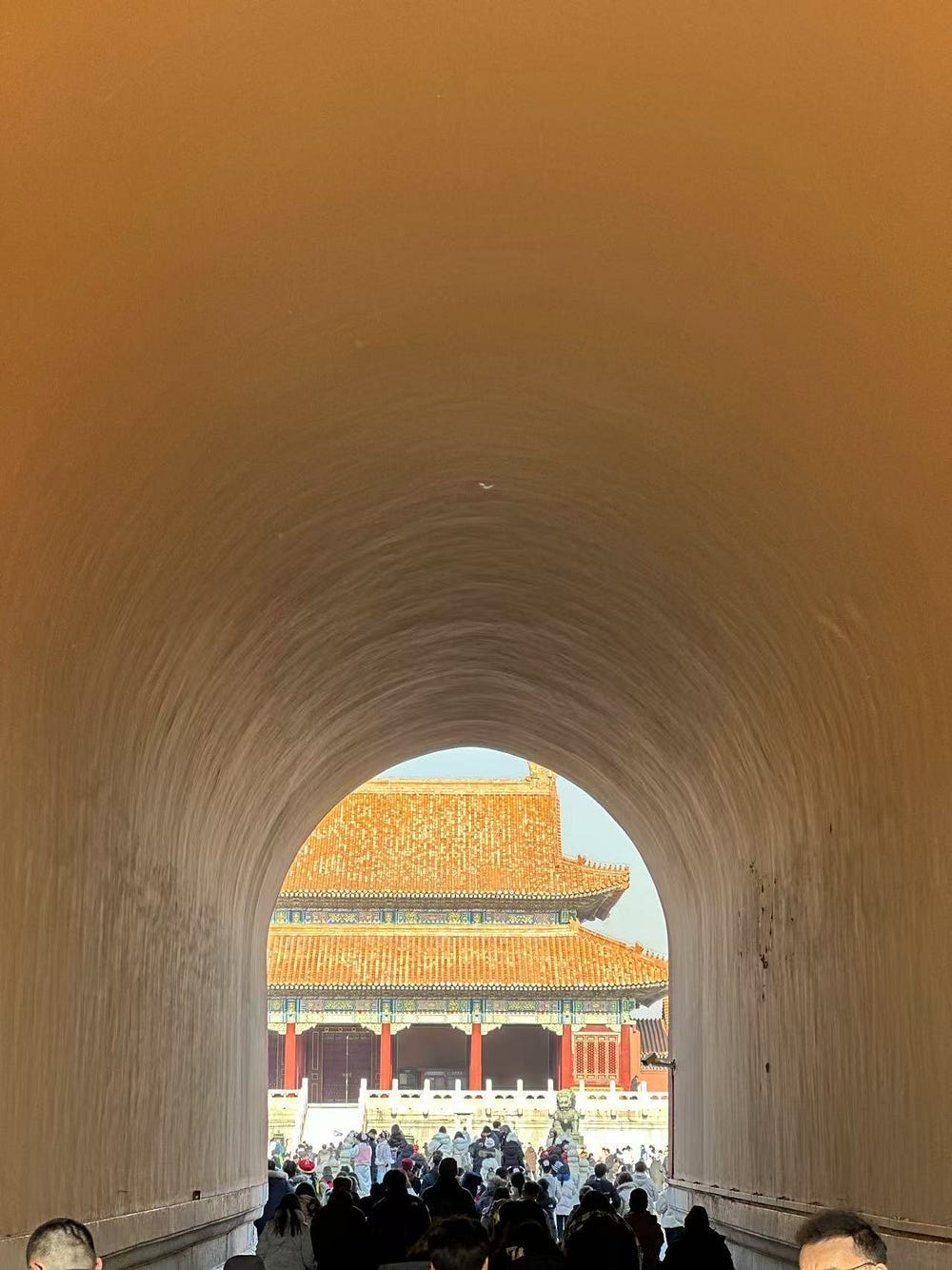
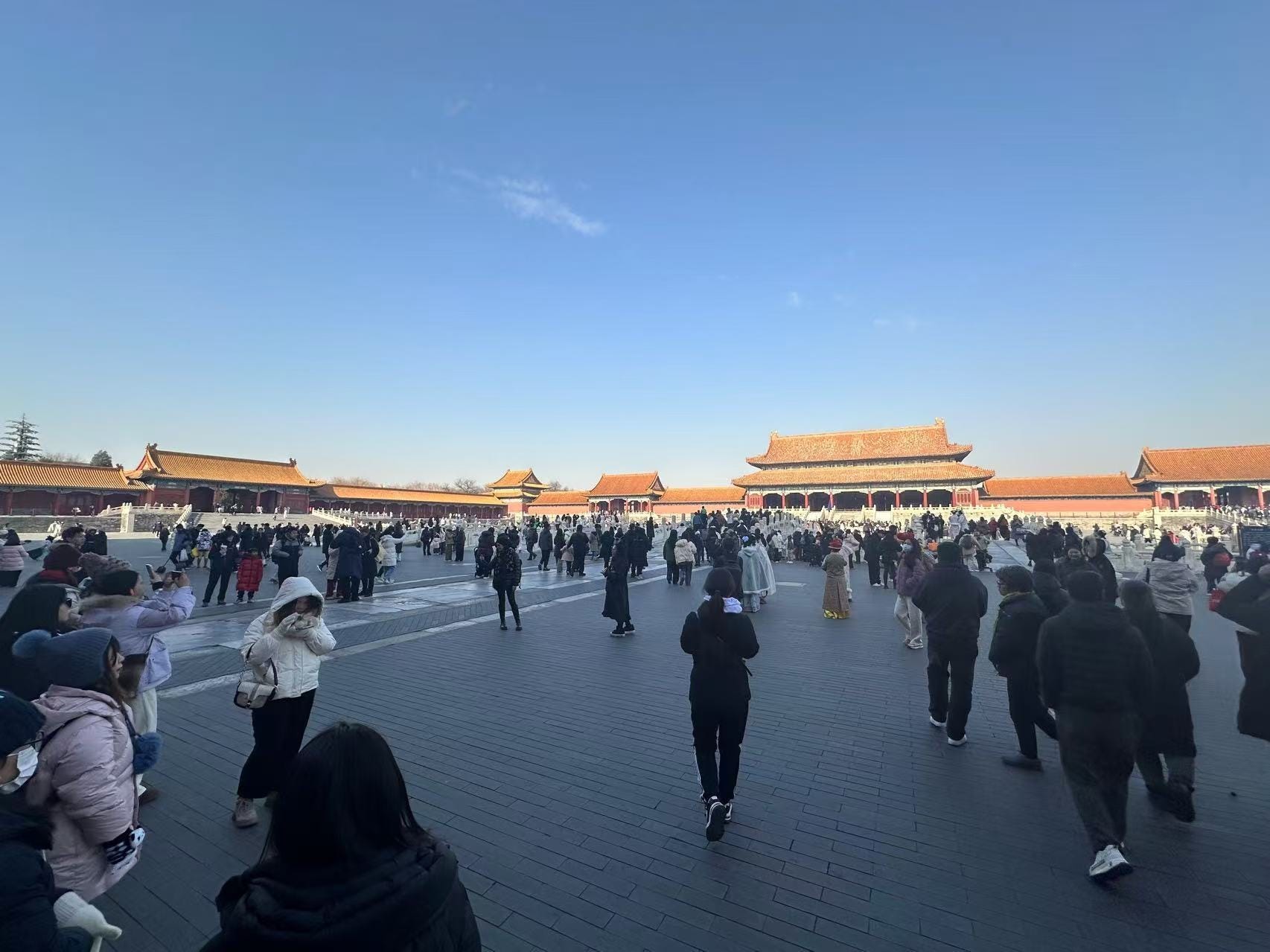
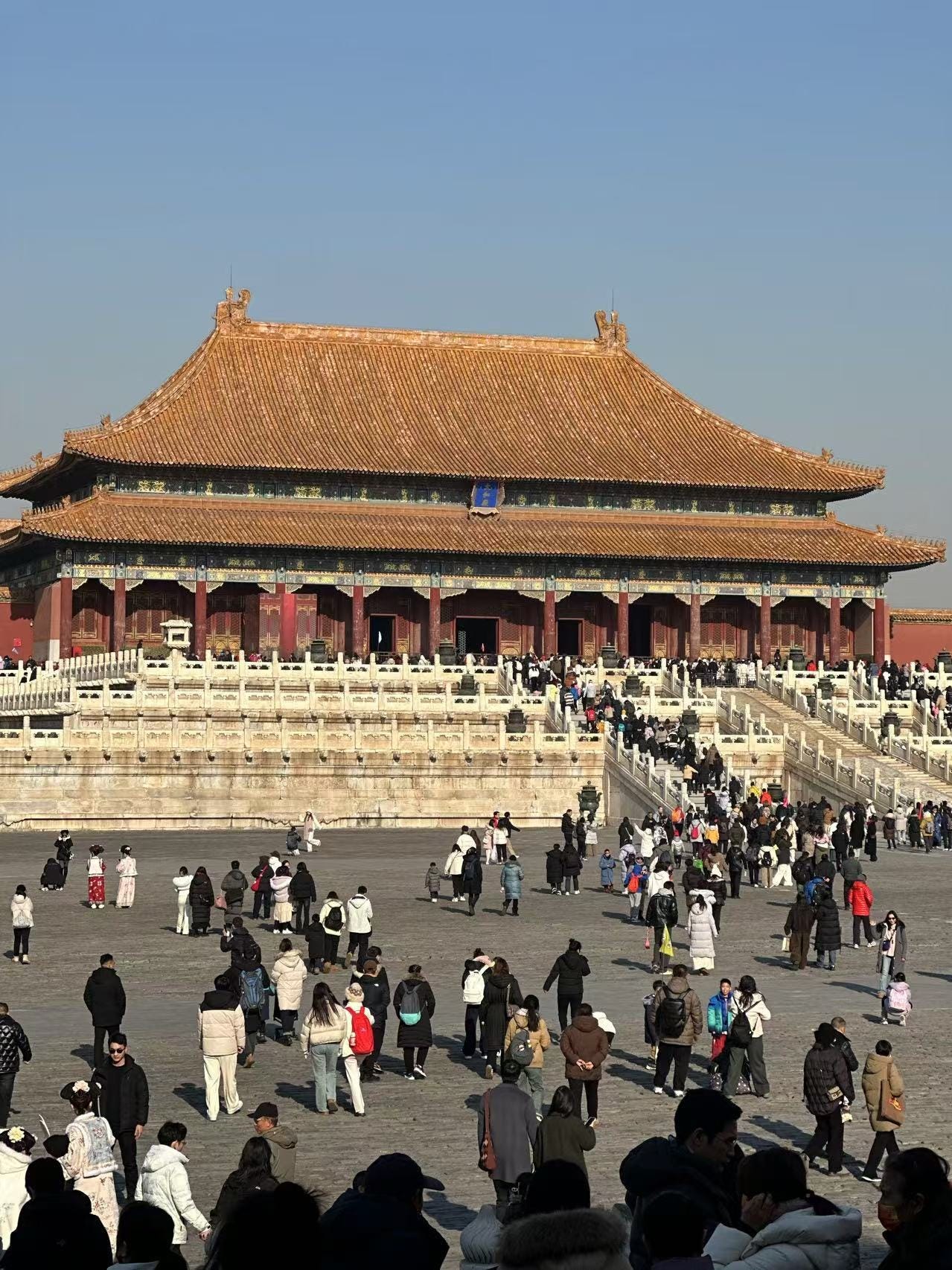

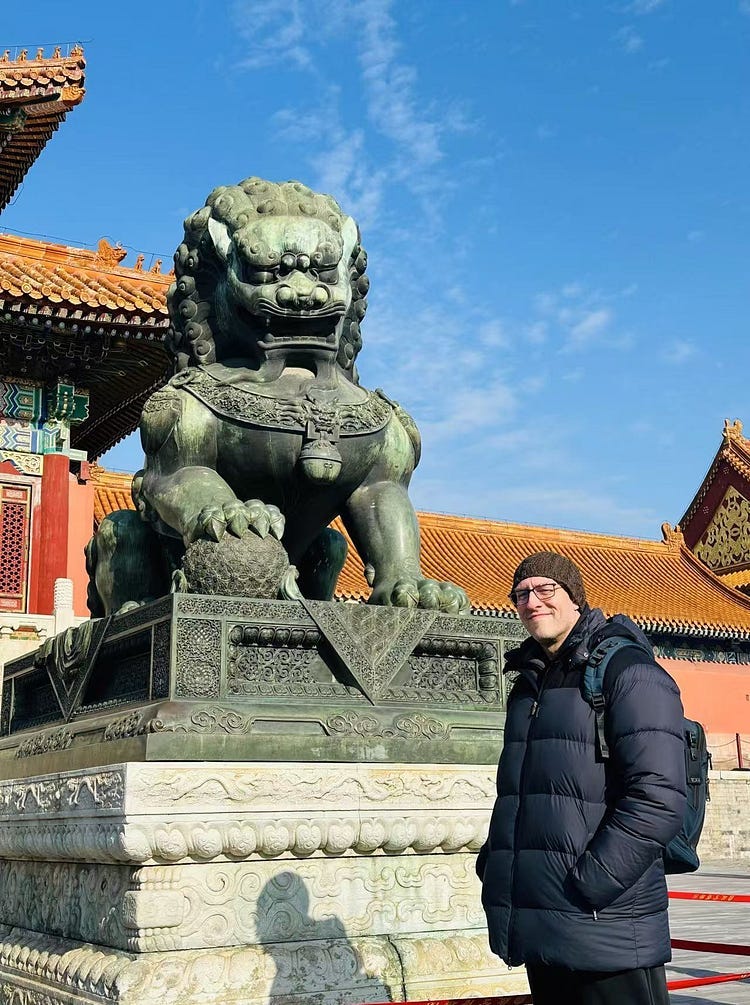
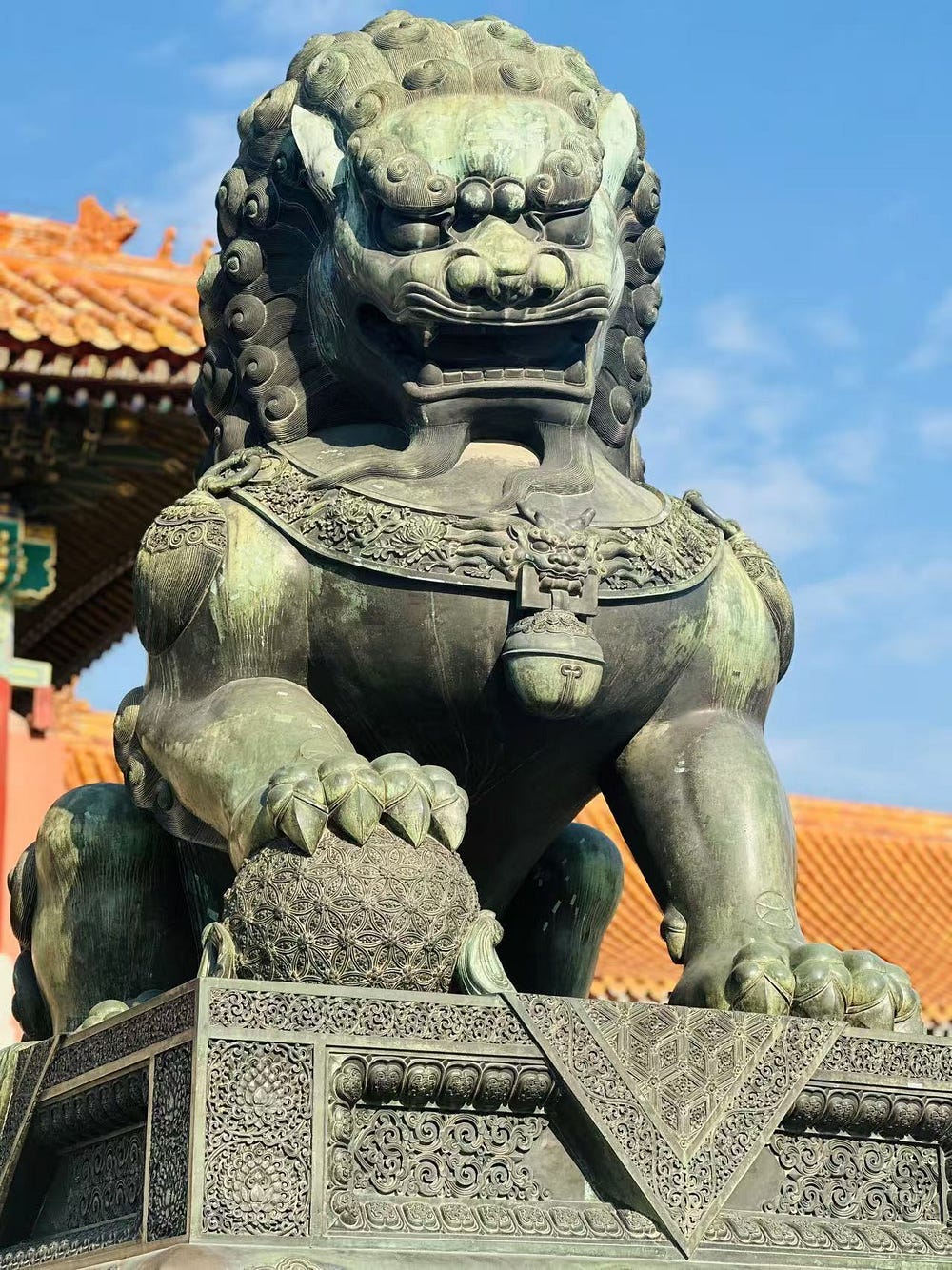
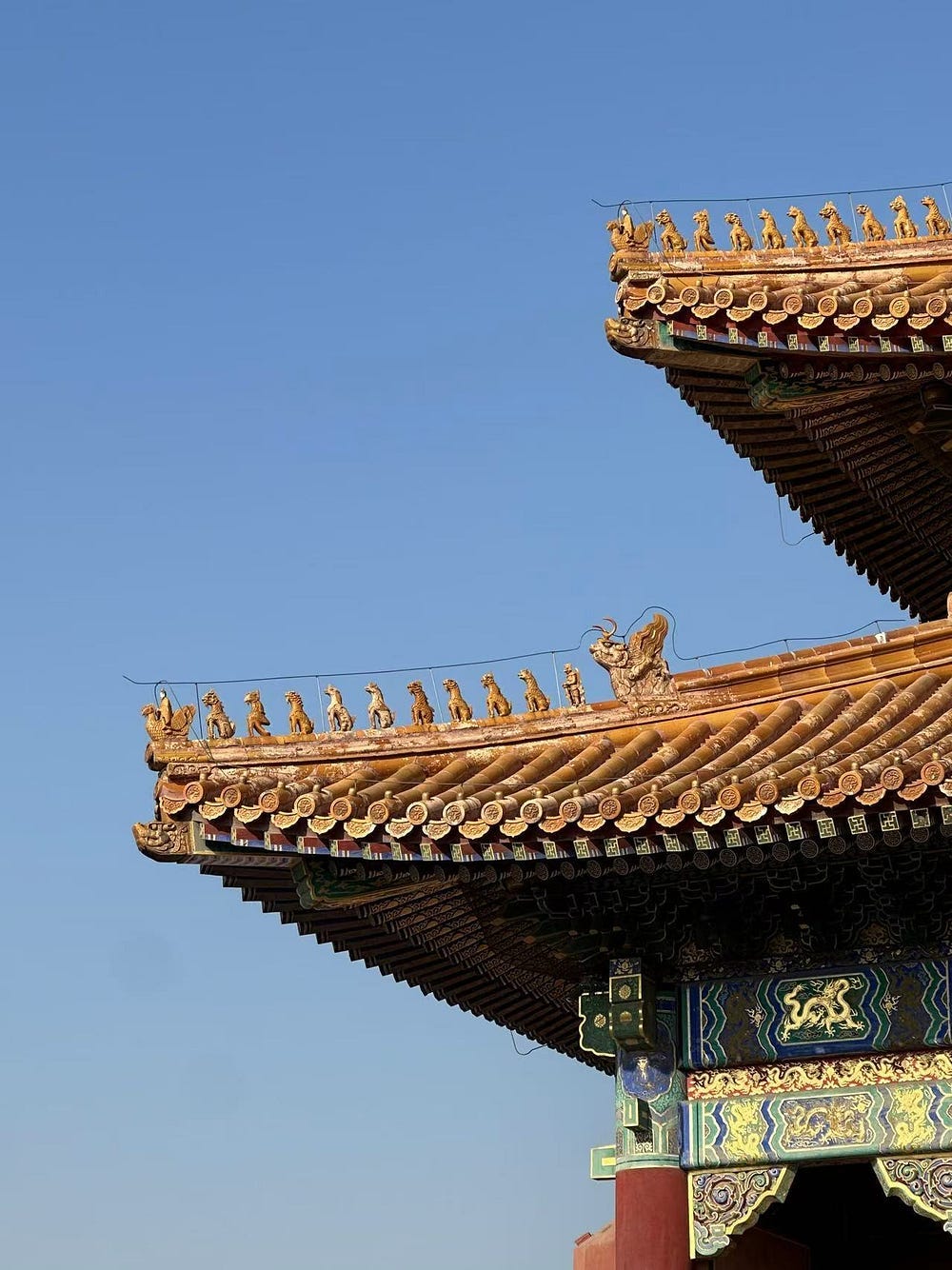
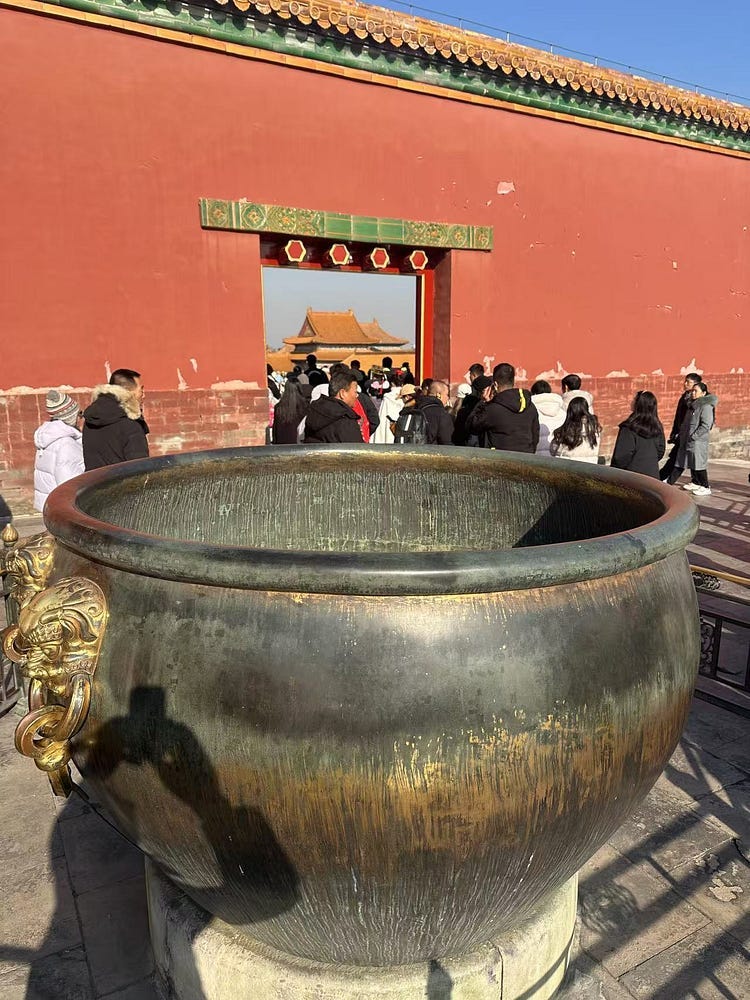




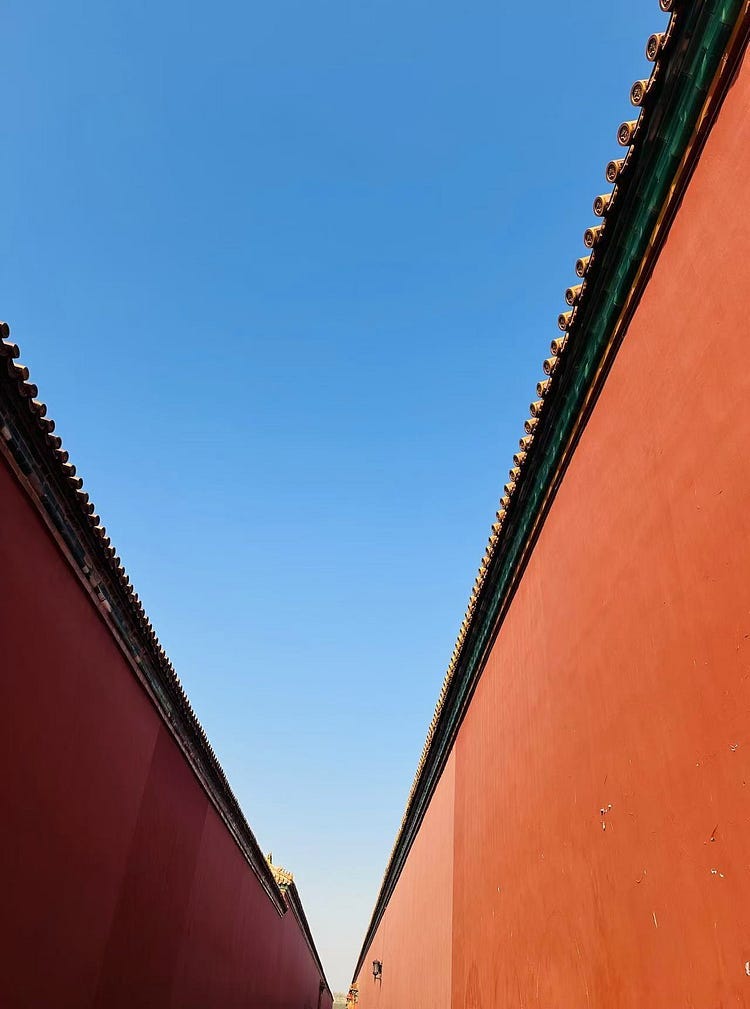
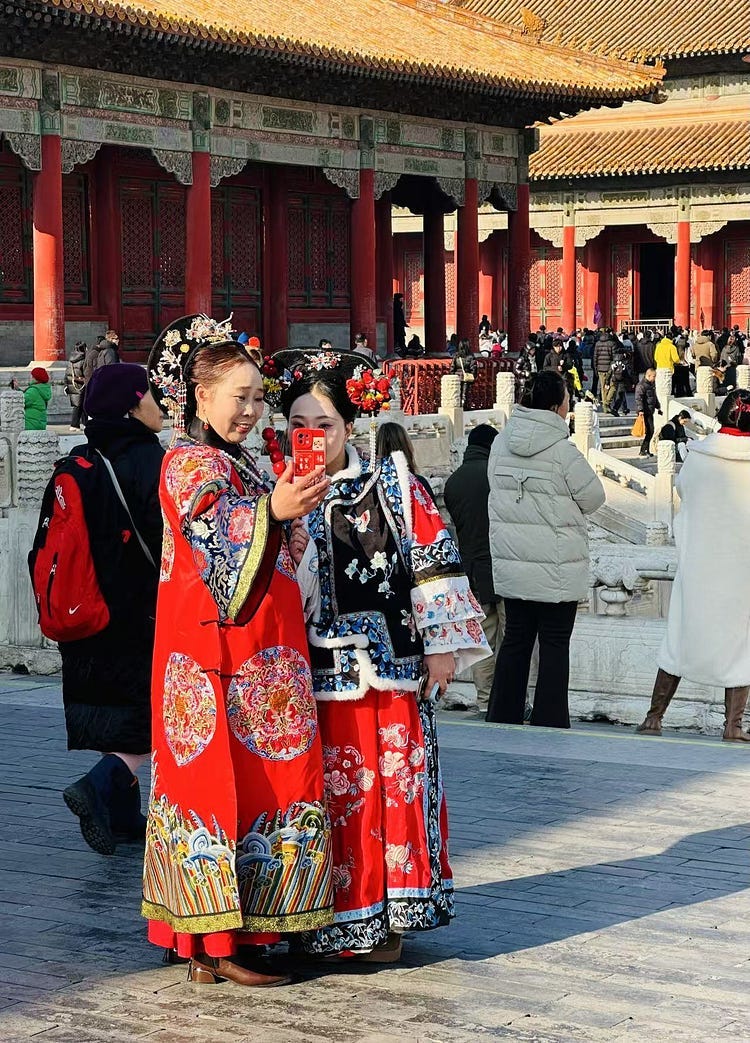







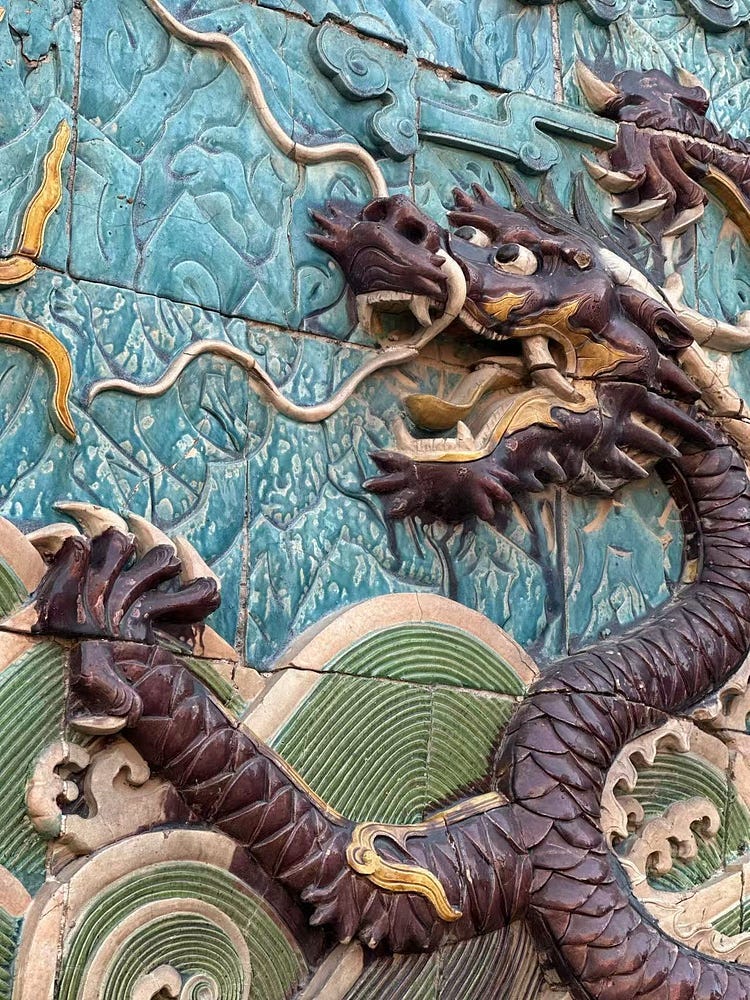


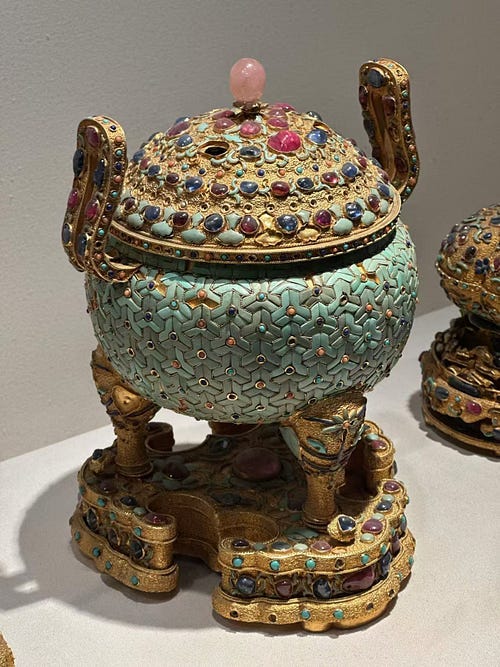

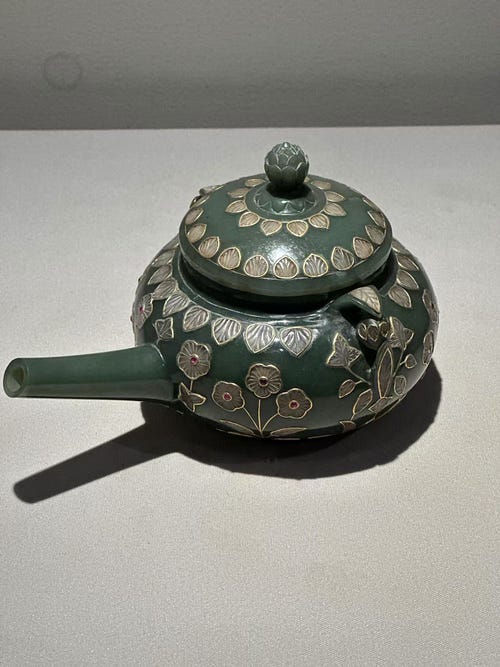

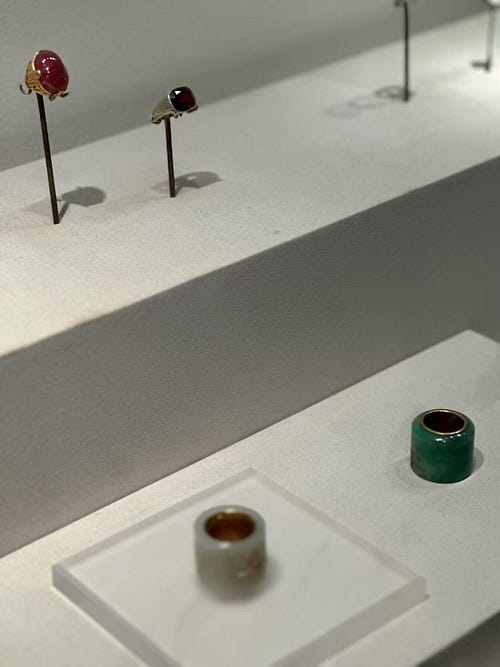
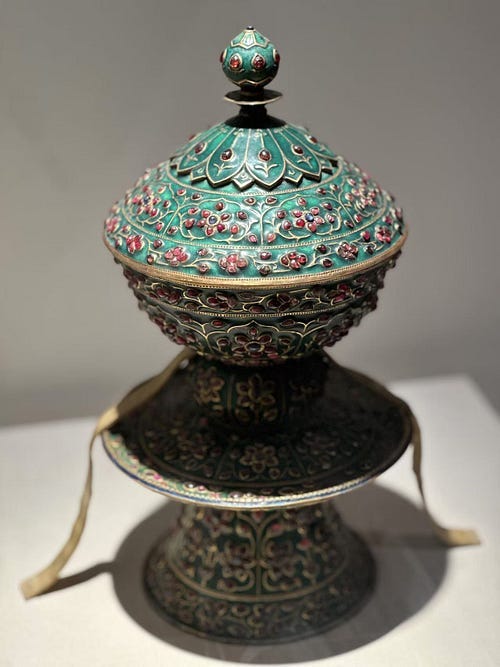
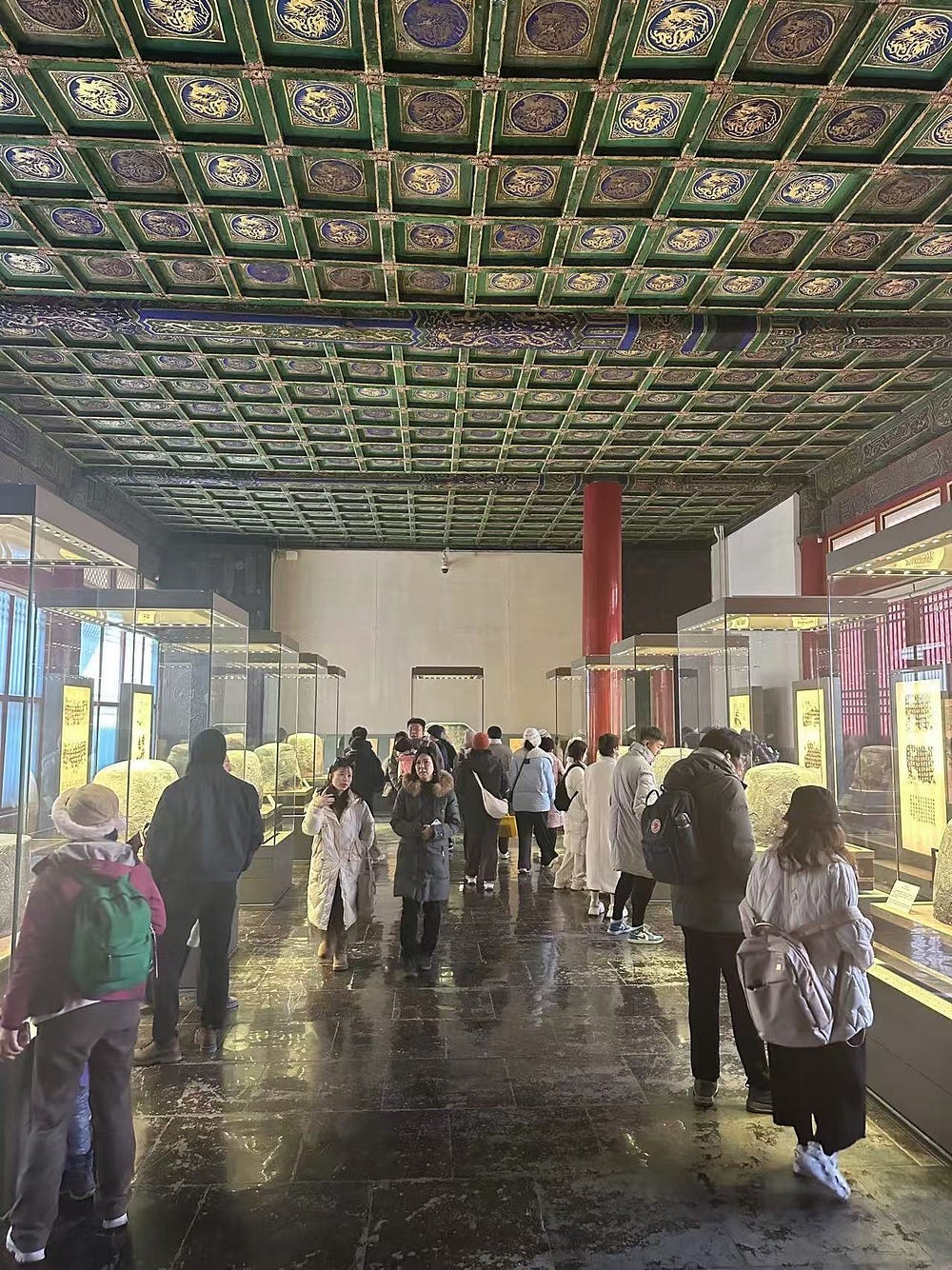

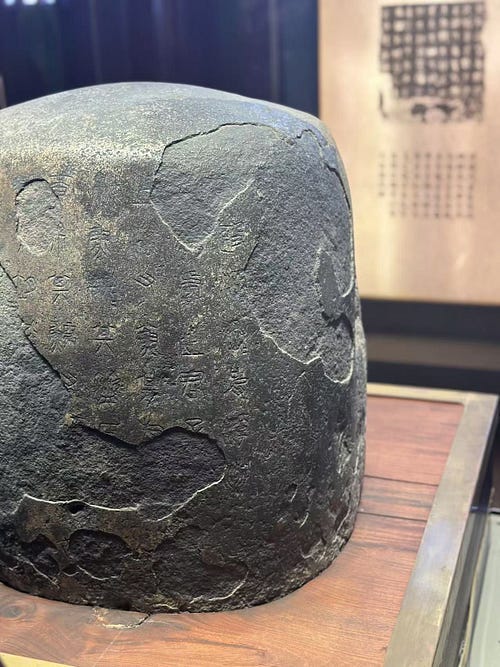
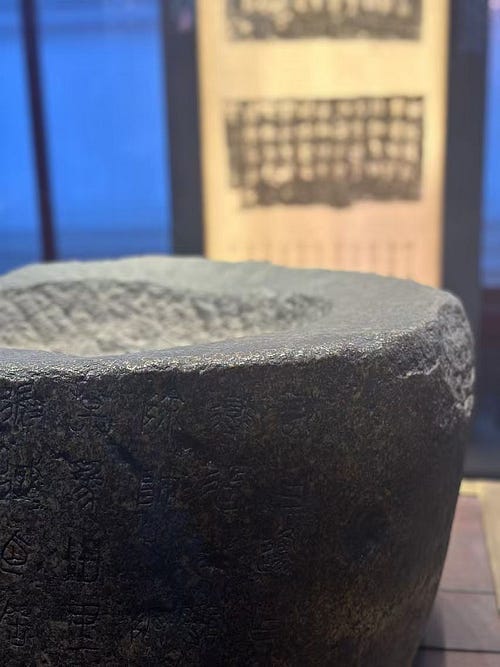
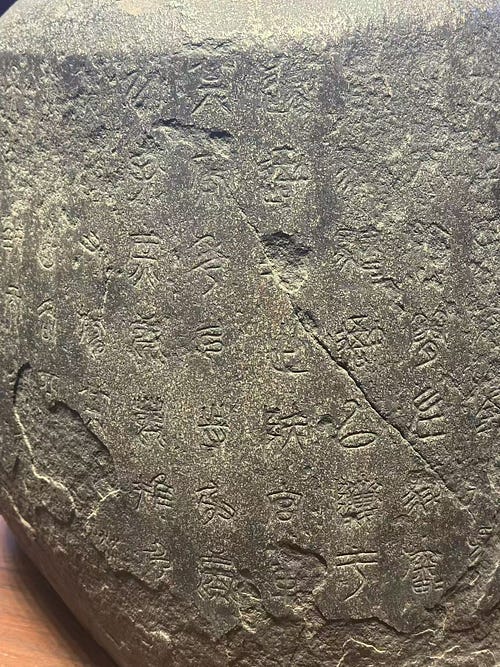
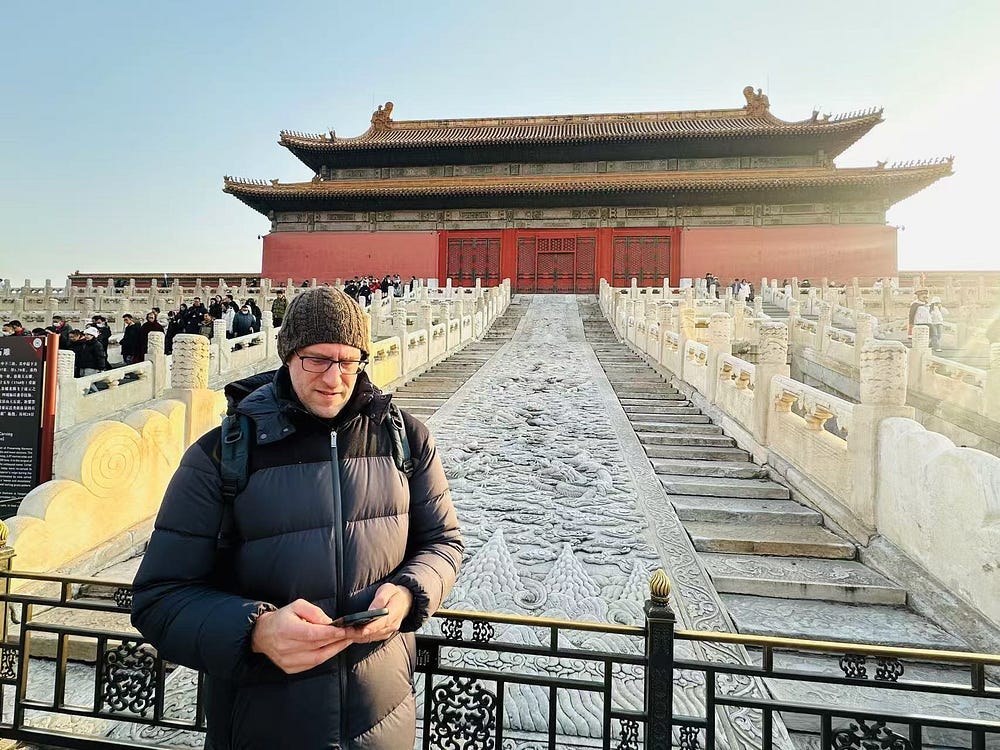

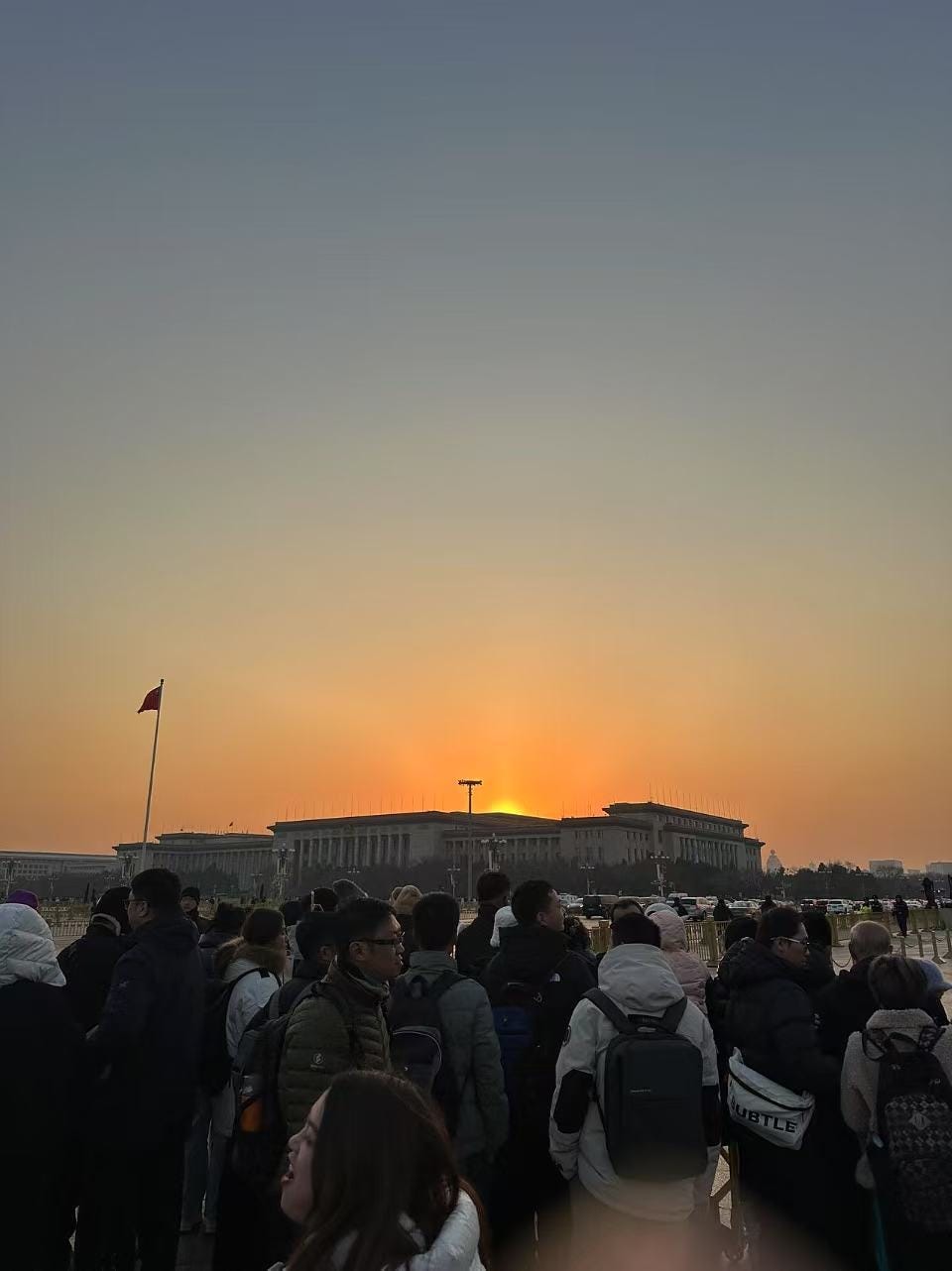
I have been there twice, each time for an entire day, and only covered about 20% of what I wanted to see. Since I have never visited the Palace Museum in Taibei, I'm curious if anyone could compare the collections. Growing up in China, we were told that the Nationalist government shipped the best of the best to Taiwan after they were defeated.
Anyway, I'm glad that Starbucks is no longer there.
Thanks for this trip down Memory Lane Paul! The imperial dress-ups alone makes it worth going back for! But the crowds! Even in the side halls. The famous Stone Drums of Qin like early Instagram dudes - now hold your horses!
Regarding 'staggering wealth concentrated in so few hands', I disagree with your conclusion.
"We may not be much better today, but we are better.' - Ya think? Ever heard of a group of oligarchs over in a country in the Far West? 😀